That Wasp Nest Has to Go. Here’s How to Do It (Safely).
I’ve been in the pest control game for a long, long time. And let me tell you, I’ve seen homeowners try just about everything to get rid of wasps. I once got a call from a guy who tried to burn a hornet nest out of a tree. He ended up calling the fire department and me on the same day. True story. I’ve seen people go after them with baseball bats, pressure washers, and even fireworks. These attempts usually end with a bunch of painful stings and a nest that is, you guessed it, still very active.
In this article
My goal here is to share what I’ve learned on the job so you can make a smart, safe choice. Honestly, sometimes you can handle a small nest yourself. Other times, you absolutely need to call in a professional. Knowing the difference is the most important skill you can have.
This isn’t about being fearless. It’s about being smart and having a healthy respect for the insects you’re dealing with. A colony defending its home is a serious threat. So, let’s walk through this the way a pro does, from figuring out what you’re looking at to making sure they don’t come back.
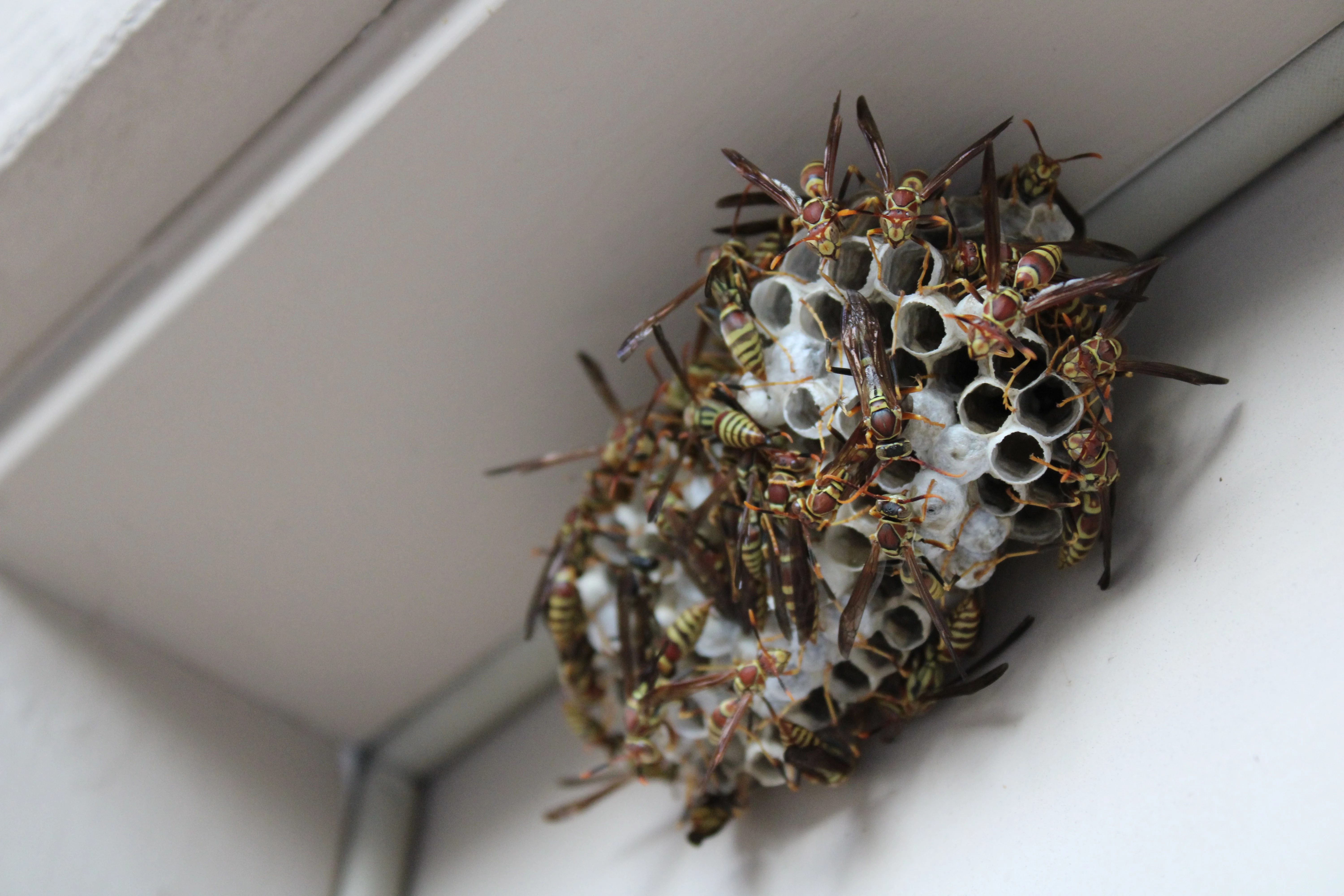
First, Know What You’re Up Against
The number one mistake people make is misidentification. Treating a honey bee colony like a yellowjacket nest is a recipe for disaster. Before you do anything, grab some binoculars and check things out from a safe distance—I’m talking at least 20 to 30 feet away.
The Usual Suspects: Social Wasps & Hornets
These are the ones that live in colonies and will aggressively defend their home. They’re our main concern.
- Yellowjackets: These are probably the most infamous, with that classic bright yellow and black pattern. The vast majority of the time, they nest in the ground. Think old rodent burrows, mulch beds, or at the base of a retaining wall. Sometimes they’ll even get inside a wall void. They’re scavengers, which is why they love your picnics and trash cans. The nest itself is usually hidden, with just a single, hard-to-see hole for an entrance. Running a lawnmower over that hole is, unfortunately, a very common way people discover them. On an aggression scale of 1 to 10? These guys are an 11 when their nest is disturbed.
- Bald-Faced Hornets: Despite the name, they aren’t true hornets; they’re actually a big, black-and-white type of yellowjacket. They build those classic, large, gray paper nests that you see hanging from tree branches or under the eaves of a house. These things can get bigger than a basketball and house hundreds of angry residents. They are extremely protective and will attack anyone who gets too close. A heads-up: if you get near an agitated nest, you can sometimes hear a low, humming vibration. That’s your final warning to back away. Slowly.
- Paper Wasps: These are the more slender wasps with long legs that dangle when they fly. Their nests are also made of paper, but they’re open-celled, looking like an upside-down umbrella with all the little hexagonal cells visible. You’ll find these under eaves, behind shutters, or even inside your BBQ grill. Generally, paper wasps are less aggressive. They usually only sting if you’re messing directly with the nest. But a sting is a sting, and it hurts.
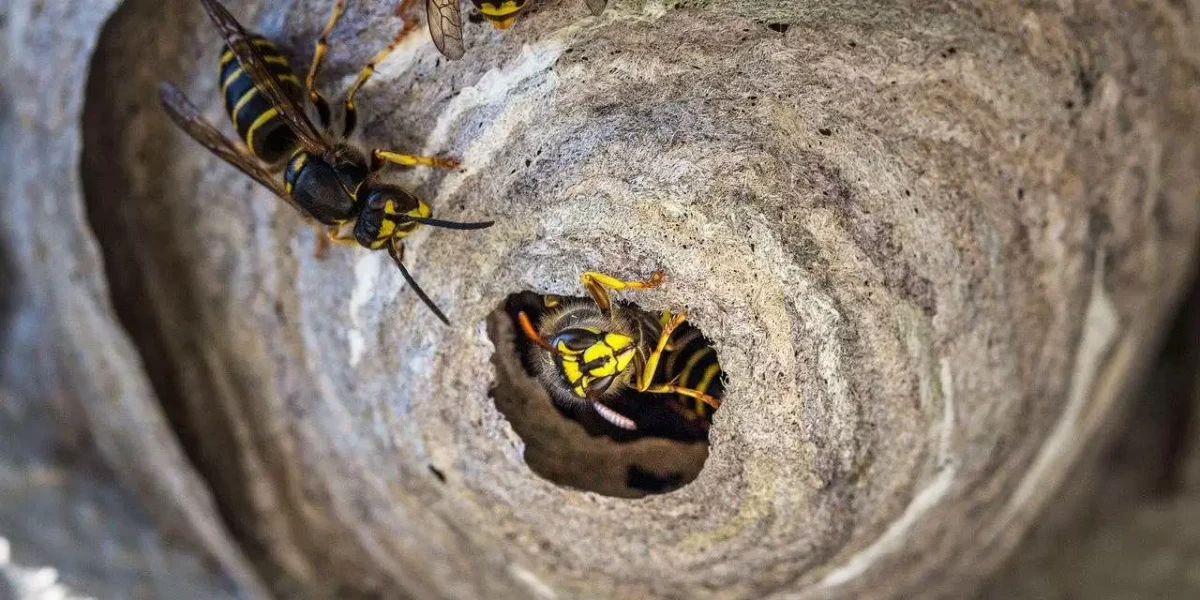
What About Bees and Other Bugs?
It’s crucial not to confuse wasps with these guys. Honey bees are fuzzy and more golden-brown, not shiny like a yellowjacket. They’re vital pollinators, and their populations are fragile. Professionals almost never exterminate honey bees. Instead, a beekeeper is called to safely relocate the colony. If you see a big ball of bees clinging to a tree branch, just leave them alone. They’re looking for a new home and will move on.
Oh yeah, and then there are Mud Daubers. They’re solitary wasps that build little mud tubes on the side of a house. They look weird, but they’re not aggressive and rarely sting. You can usually just scrape the nests off with a putty knife. They’re not a real threat.
The Science of the Swarm (And Why It Matters)
Here’s the single most important thing to understand. When a social wasp stings, it injects venom. Unlike a honey bee, it can sting you over and over. But the real danger is the alarm pheromone. When a wasp is threatened or crushed, it releases a chemical signal that basically screams “ATTACK!” to the rest of the colony. This is how one swat turns into dozens, or even hundreds, of angry wasps coming right for you.

I learned this lesson the hard way early in my career. I got a little careless and swatted a single yellowjacket near a nest entrance. Seconds later, it felt like the entire ground was erupting to get me. I never made that mistake again. Your goal is always to eliminate the colony without triggering that alarm.
The Big Decision: DIY or Call a Pro?
Before you even think about grabbing a can of spray, you need to do a serious risk assessment. Rushing in is how you get hurt.
Here’s my rule of thumb for when to immediately pick up the phone and call a professional:
- If the nest is bigger than your fist. A small, new paper wasp nest might be manageable. A basketball-sized hornet nest is not.
- If you can’t easily reach it from the ground. Getting on a ladder to fight wasps is one of the most dangerous things you can do. One sting could make you lose your balance. It’s just not worth the risk.
- If it’s a yellowjacket nest. Especially if it’s in the ground or, even worse, in the walls of your house. These require specialized equipment and expertise to handle safely.
- If you are, or even suspect you might be, allergic to stings. This is non-negotiable. Don’t risk it.
- If you’re just not comfortable. Honestly, there’s no shame in tapping out. Peace of mind is priceless.
By the way, calling a pro isn’t free, but it’s safe. For a straightforward paper wasp or bald-faced hornet nest, you might be looking at a cost between $150 and $350. But if you have yellowjackets in a wall void, that’s a much more complex job that could run $400 or more. It sounds like a lot, but an emergency room visit costs way more.
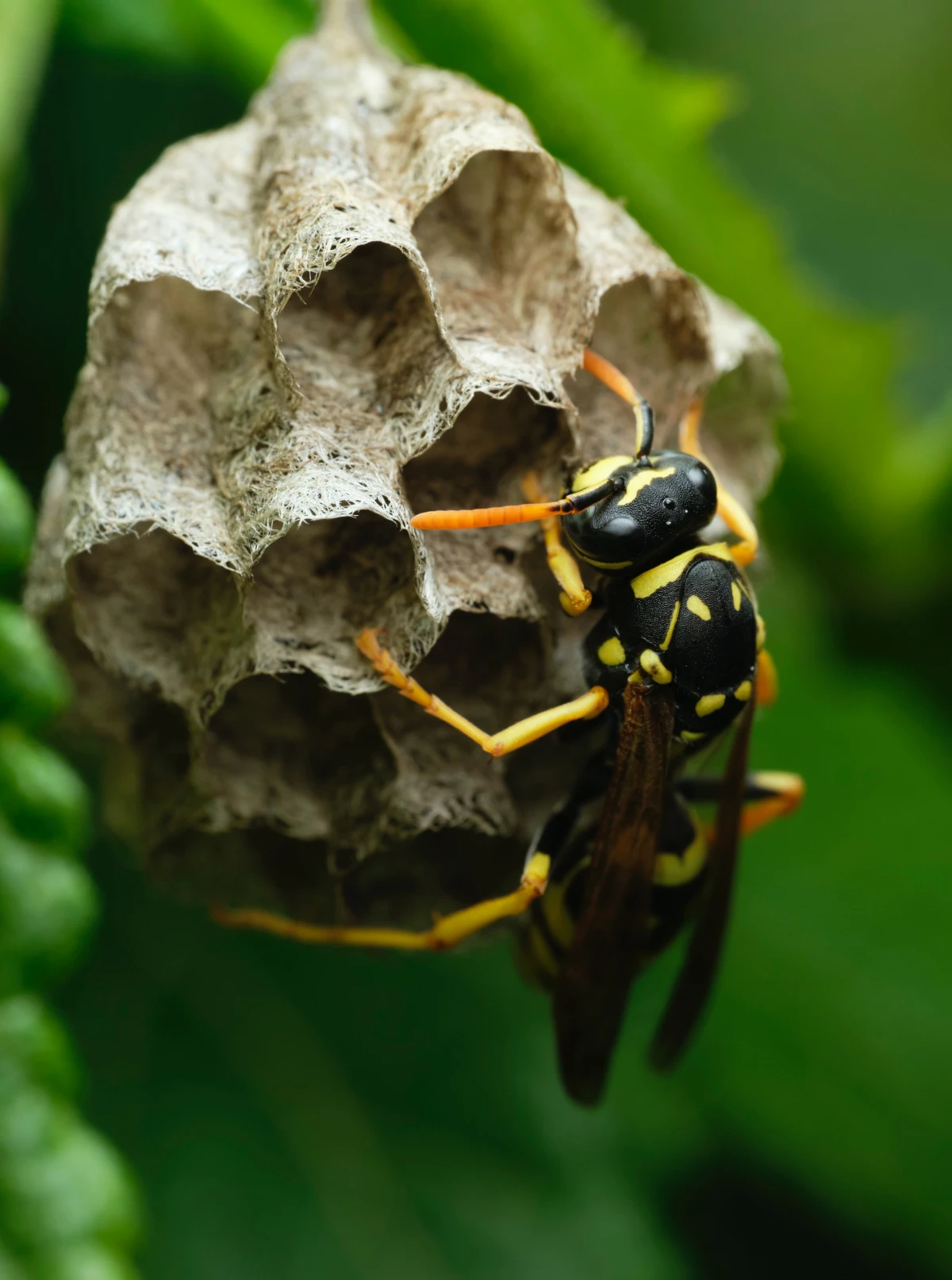
Your DIY Wasp Removal Playbook (For Small, Accessible Nests Only!)
Okay, so you’ve assessed the situation and you’re dealing with a small, easy-to-reach paper wasp nest. If you’re confident, here’s how to tackle it.
Step 1: Gear Up (Your Shopping List)
Head to any hardware store like Home Depot or Lowe’s. You need a dedicated Wasp & Hornet Killer spray. The most important feature is a jet spray that can shoot from at least 20 feet away. Don’t cheap out here; a good can will cost you between $10 and $15. Also, grab some safety glasses. And for your outfit, think full coverage: long sleeves, long pants tucked into socks, and closed-toe shoes.
Step 2: Timing is Everything
This is the secret weapon for DIY success. You must attack the nest either at dusk or just before dawn. Why? Because at night, the entire colony is inside the nest and they’re much less active and aggressive. It’s a total game-changer for your safety.
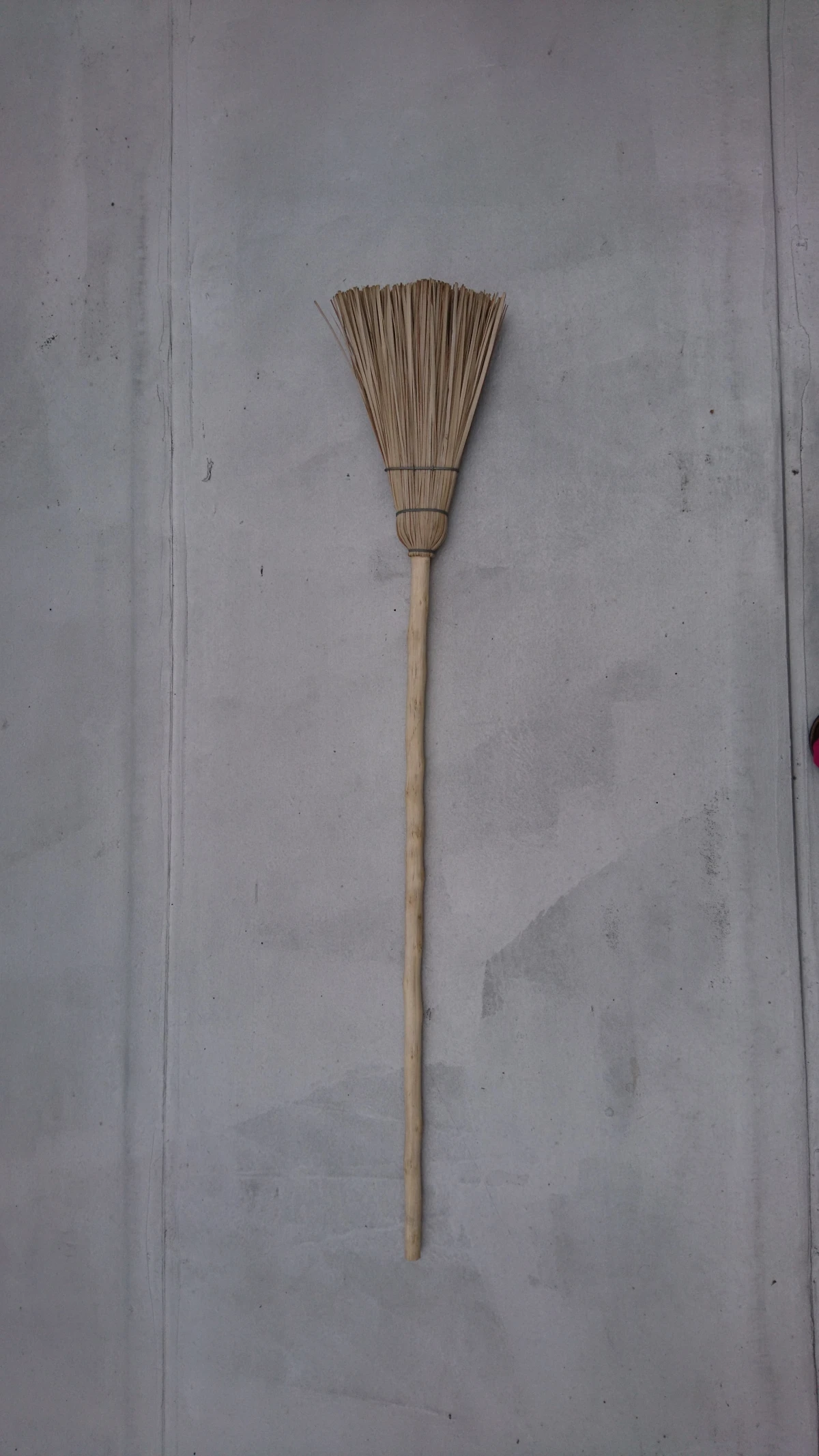
Step 3: The Takedown
First, plan your escape route. Make sure you have a clear path to get back inside quickly. Approach the nest slowly and from a distance. Get as close as you can while still feeling safe (at least 15-20 feet), aim the jet spray directly at the main opening of the nest, and let it rip. Soak the entrance thoroughly for a good 30-60 seconds to get as much product inside as possible. Then, turn around and walk away calmly. Don’t stick around to watch.
Step 4: The Aftermath
Wait a full 24 hours. The next day, observe the nest from a safe distance. If you don’t see any activity, the job is done. You can then use a long pole or stick to knock the nest down. This is important because it prevents another queen from trying to re-use the structure.
What to Do if You Get Stung
Even with precautions, accidents happen. If you get stung:
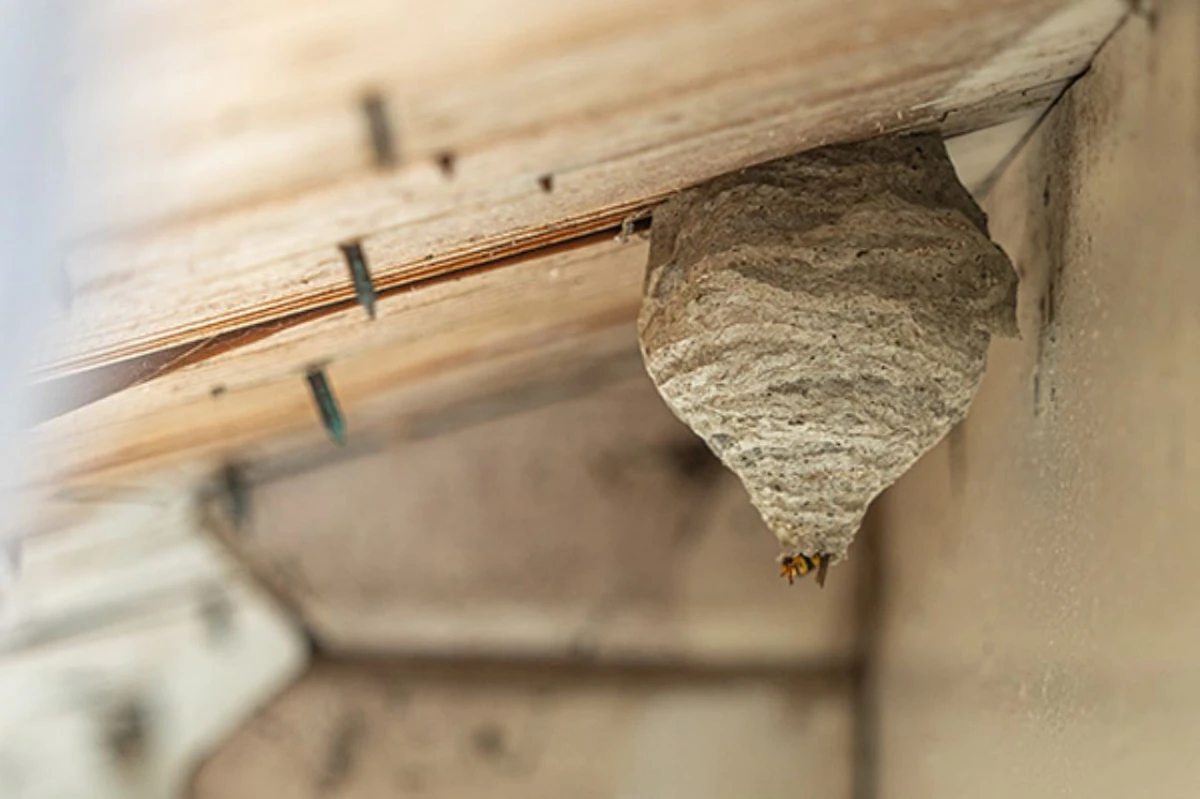
- Get away immediately. Don’t swat, just move away from the nest area to avoid that alarm pheromone.
- Wash the area with soap and water.
- Apply a cold compress or ice pack to reduce swelling and pain.
- Over-the-counter pain relievers or an antihistamine can help with the discomfort and itching.
Heads up! Watch for signs of a severe allergic reaction (anaphylaxis). This includes difficulty breathing, swelling of the face or throat, dizziness, or hives spreading across your body. If you experience ANY of these symptoms, it is a medical emergency. Call 911 immediately.
A Little Prevention Goes a Long Way
Once you’re in the clear, you can do a few things to keep wasps from coming back. In the spring, take a walk around your property and look for small, quarter-sized starter nests under eaves and in sheds. Knocking them down early is easy and effective. Also, make sure to seal up any obvious cracks or holes in your home’s exterior and keep your trash and recycling bins tightly covered.
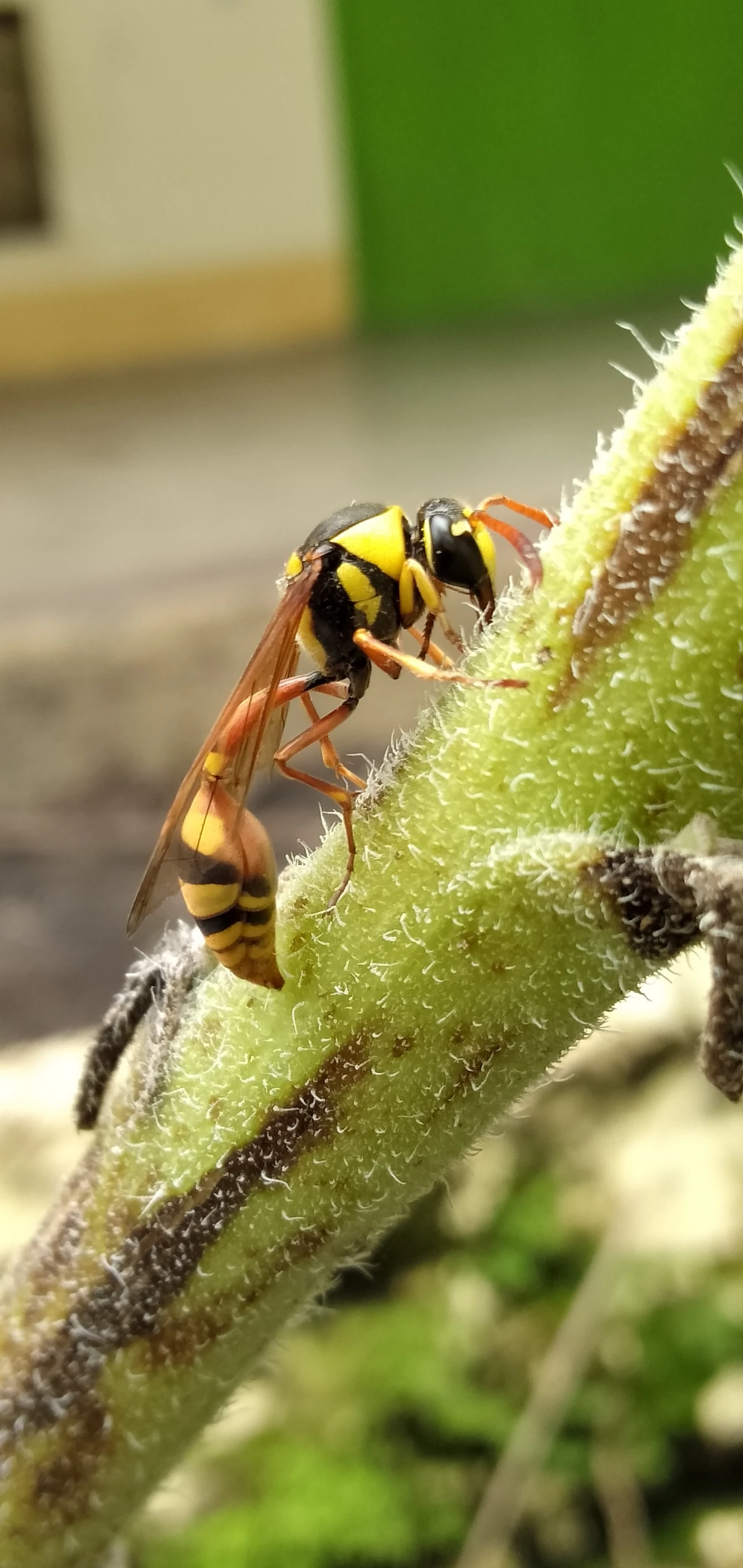
At the end of the day, dealing with wasps is about being prepared and respectful. Take your time, make a smart call, and when in doubt, just leave it to the pros. It’s what we’re here for.
Galerie d’inspiration
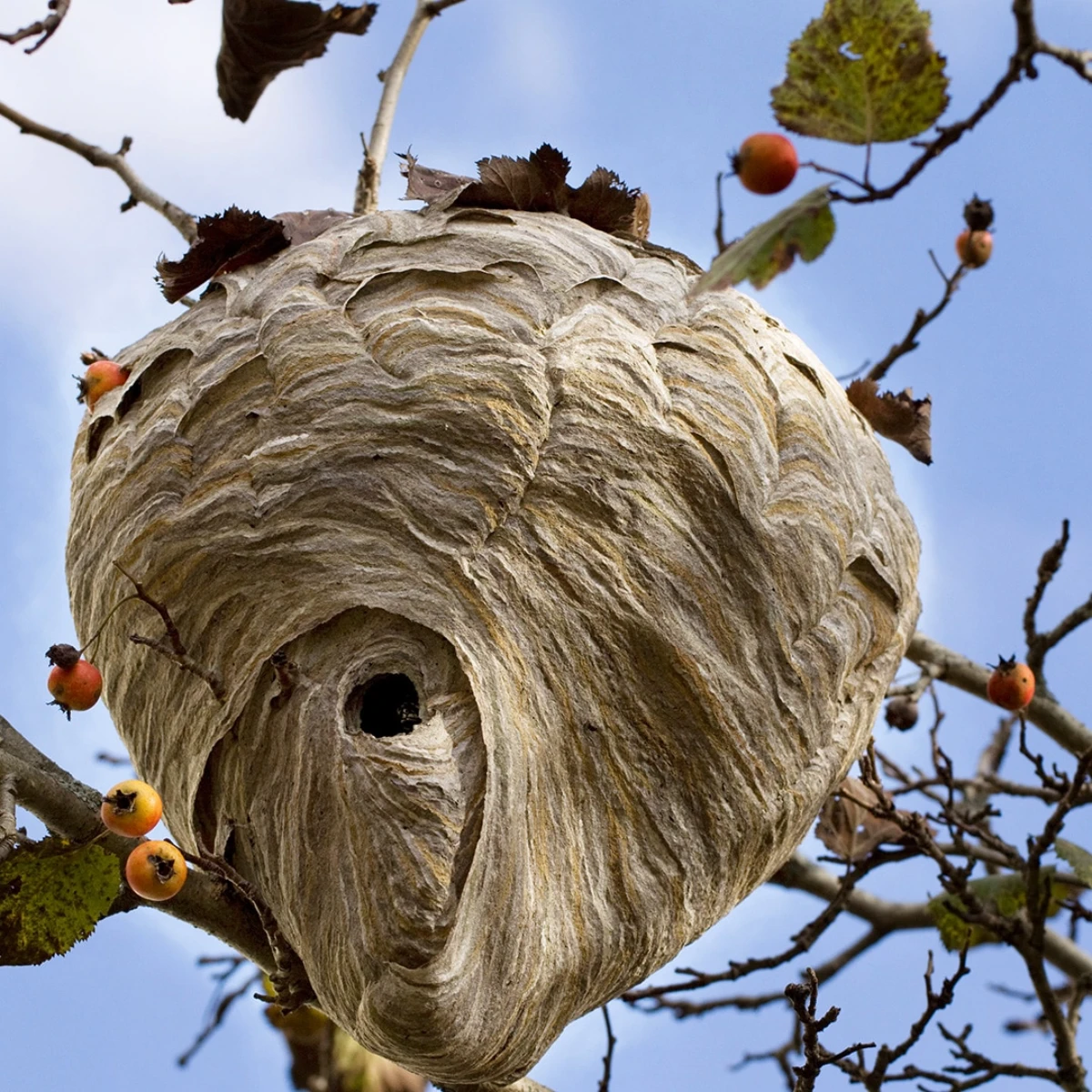
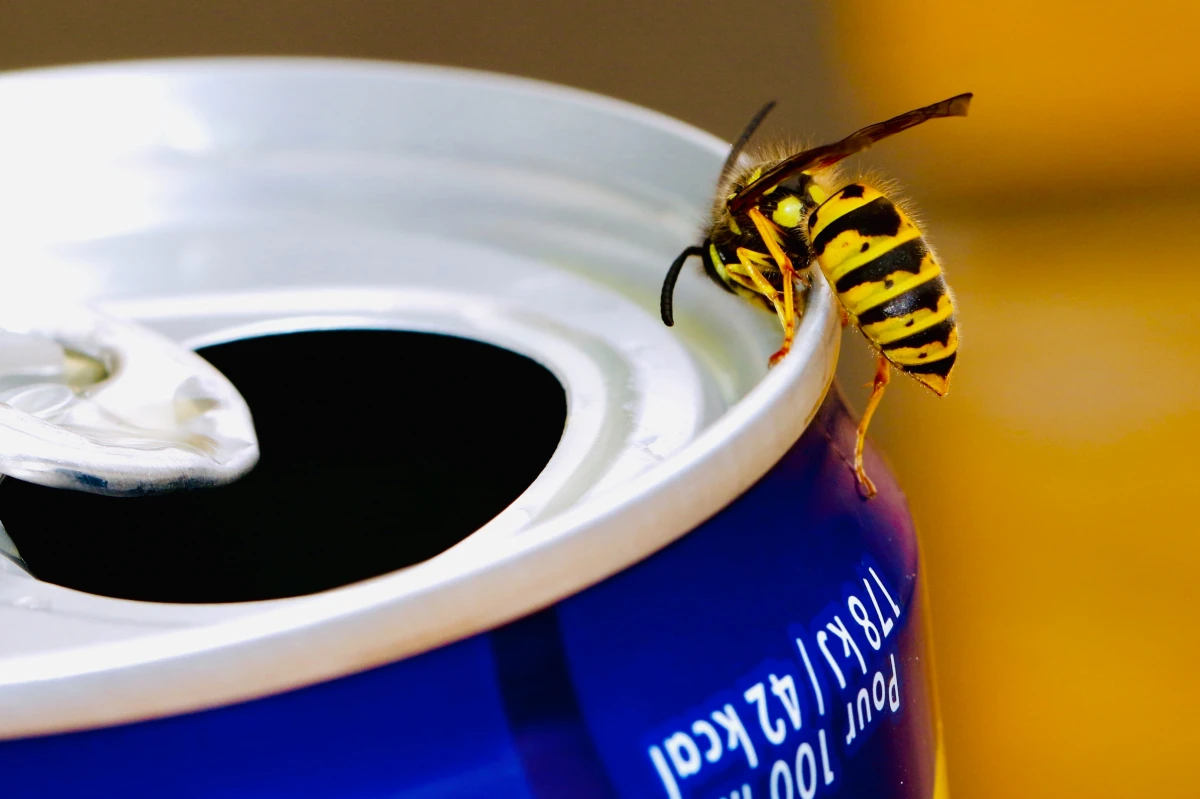
An ounce of prevention is worth a pound of cure, especially when the cure involves a swarm of angry insects. To make your property less inviting to next season’s queen wasps, focus on these key areas in early spring:
- Seal Entry Points: Inspect and caulk any cracks in your foundation, siding, and around window frames. Pay close attention to soffits and attic vents.
- Manage Food Sources: Keep outdoor trash cans tightly sealed and clean up sugary drink spills from decks or patios promptly.
- Hang Decoys: Wasps are territorial. Hanging a few decoy nests, like a
A single yellowjacket colony can contain between 400 and 5,000 workers by late summer.
That staggering number is why choosing the right tool for a DIY job is non-negotiable. Don’t just grab any aerosol can. You need a dedicated wasp and hornet killer spray with a jet stream that reaches at least 20 feet—products from Ortho or BioAdvanced are good examples. This distance is your primary safety feature, allowing you to thoroughly soak an aerial nest from a point where the wasps won’t immediately perceive you as a direct threat, giving you a crucial head start to retreat indoors.
Is there an absolute











